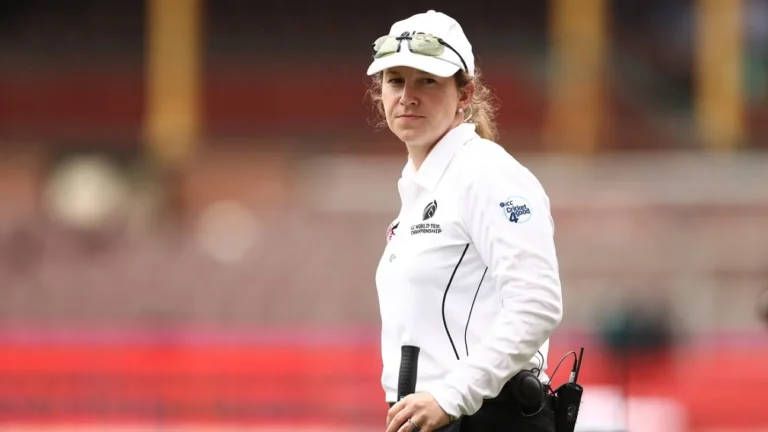In recent years, there has been a positive trend in the inclusion of women in officiating roles in cricket. Women umpires have been breaking barriers and making significant contributions to the sport. Here are some notable instances:
- Claire Polosak (Australia):
- Claire Polosak became the first woman to officiate in a men’s One Day International (ODI) match. She stood as the on-field umpire in the match between Namibia and Oman during the ICC World Cricket League Division 2 in April 2019.
- Jacqueline Williams (West Indies):
- Jacqueline Williams, from the West Indies, made history by becoming the first woman to officiate as the third umpire in a men’s international match. She achieved this milestone during a T20I between the West Indies and Afghanistan in 2019.
- Kathy Cross (New Zealand):
- Kathy Cross became the first woman to officiate in a men’s domestic match in New Zealand. She served as the third umpire in a men’s List A game in 2016.
- GS Lakshmi (India):
- GS Lakshmi became the first woman to be appointed to the ICC International Panel of Match Referees. She officiated in women’s ODIs and T20Is before breaking into the men’s game as the match referee in a T20 International between the UAE and the USA.
- Kim Cotton (England):
- Kim Cotton was the first woman to stand as an umpire in a men’s county cricket match in England. She officiated in various men’s and women’s matches during her career.
- Ahsan Raza (Pakistan):
- Ahsan Raza, a Pakistani umpire, played a significant role in promoting women in officiating. His daughter, Ayesha Raza, became Pakistan’s first female match referee, further breaking gender barriers in cricket administration.
- Australia-England Women’s Ashes Test (2019):
- The historic Women’s Ashes Test match between Australia and England in 2019 saw an all-female officiating team. Claire Polosak and Sue Redfern were the on-field umpires, while Lauren Agenbag served as the match referee.
- Reshmi Shetty (India):
- Reshmi Shetty made history by becoming the first Indian woman to be appointed as the match referee in a men’s domestic cricket match. This marked a significant step forward in promoting gender diversity in cricket officiating.
These examples highlight the increasing opportunities and recognition for women in cricket officiating. The cricketing community continues to strive for inclusivity and equal representation, and the presence of women in umpiring roles contributes to the overall growth and development of the sport.


